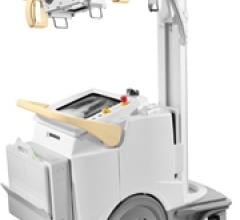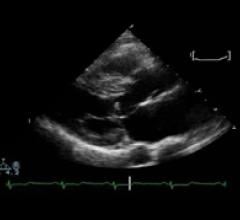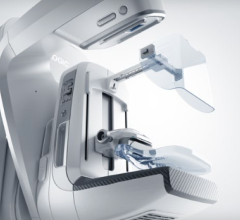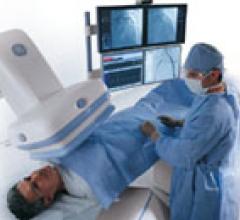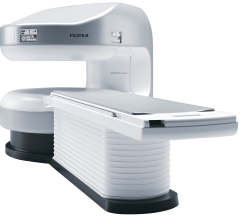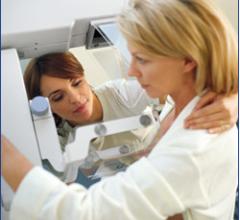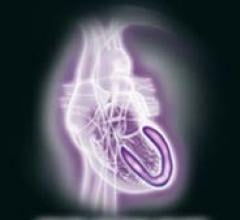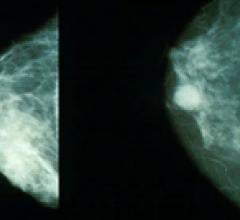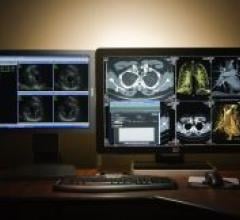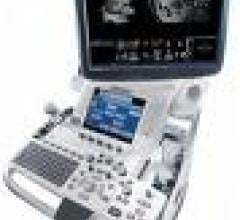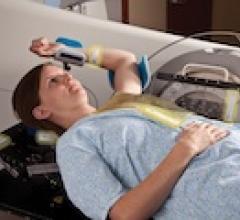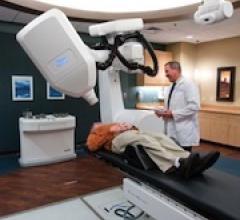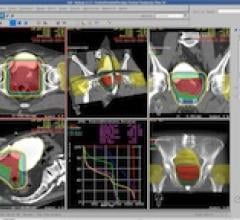Typically, the only radiation facing travelers is from the airport scanners they must walk through to board airplanes. Not so, however, for two travelers who set off radiation alarms when crossing the U.S. border earlier this month, an incident whose fallout threatens the future of cardiac PET.
July 27, 2011 — Philips’ new MobileDiagnost, a mobile digital radiography (DR) solution with a wireless portable detector that facilitates diagnosis of immobile and critical patients, is now available in the United States. The portable solution improves workflow and efficiency of patient exams through an intuitive user interface and rapid access to digital images.
July 27, 2011 – A new echocardiography remote reading program was introduced to provide expert exam interpretation in all 50 states. The new program, created by USARAD.com, a Joint Commission accredited provider of imaging services, is intended to address the longstanding need for fast, reliable interpretation of echocardiograms for mobile ultrasound companies and other imaging facilities across the nation.
While most women understand the importance of health screenings, an estimated 72 million have missed or postponed a ...
July 27, 2011 — D3 Oncology Solutions announced that it will begin offering a comprehensive product to radiation oncologists and surgeons to rapidly and safely implement a successful stereotactic radiosurgery/stereotactic body radiation therapy (SRS/SBRT) program.
July 27, 2011 – As the number of interventional procedures to diagnose and treat patients increases worldwide, and the procedures grow in complexity and length, exposure to radiation is a growing concern for both clinicians and patients. Interventional fluoroscopy is the third largest source of radiation from medical procedures, accounting for about 7 percent of the total radiation exposure of Americans in a year, according to a study by the National Council on Radiation Protection. GE’s Innova imaging systems help clinicians reduce radiation exposure without compromising the image quality they need to make confident decisions during interventional procedures.

SPONSORED CONTENT — Fujifilm’s latest CT technology brings exceptional image quality to a compact and user- and patient ...
July 27, 2011 —Elekta will demonstrate not only the depth and breadth of its offerings, but its commitment to maximize safety in radiation therapy delivery at the joint 2011 AAPM/COMP meeting. The conference will convene July 31 - August 4 in Vancouver, B.C., Canada.
Fujifilm’s APERTO Lucent is a 0.4T mid-field, open MRI system addressing today’s capability and image quality needs ...
July 27, 2011 — The American Society of Breast Disease (ASBD) strongly supports the new screening mammography guidelines of the American College of Obstetrics and Gynecology (ACOG) recommending annual screening for all women ages 40 - 49.
The U.S. Food and Drug Administration (FDA) is alerting healthcare professionals to stop using CardioGen-82 for cardiac positron emission tomography (PET) scans. The manufacturer, Bracco Diagnostics Inc., has decided to voluntarily recall CardioGen-82 this week after two patients set off radiation detectors at a U.S. border crossings due to strontium contamination.
July 26, 2011 – Due to the high incidence of breast cancer in the United States and the potential to reduce deaths from it when caught early, The American College of Obstetricians and Gynecologists (ACOG) issued new breast cancer screening guidelines that recommend mammography screening be offered annually to women beginning at age 40. Previous ACOG guidelines recommended mammograms every one to two years starting at age 40 and annually beginning at age 50.
SPONSORED CONTENT — Fujifilm’s latest CT technology brings exceptional image quality to a compact and user- and patient ...
July 26, 2011 – Kootenai Imaging has chosen McKesson revenue management solutions (RMS) to position the practice for sustained growth, including preparing for ICD-10 coding changes and tracking physician quality reporting indicators. With 13 physicians and two imaging centers serving hospitals in northern Idaho, Kootenai Imaging will benefit from McKesson RMS’s advanced business intelligence services and industry-leading compliance programs.
July 26, 2011 – Accuray announced installation of the CyberKnife robotic radiosurgery system at five renowned academic oncology centers in Europe and the United States, including the Penn Medecine at Pennsylvania in Philadelphia, PA; The Royal Marsden Hospital in London, England; The Barts Cancer Center at St. Bartholomew’s Hospital in London, England; Charite University in Berlin, Germany; and Maria Sklodowska-Curie Memorial Cancer Center and Institute of Oncology, Gliwice Branch in Gliwice, Poland. Backed by solid clinical evidence for a wide range of treatment applications, including prostate and lung cancer, the CyberKnife system empowers these leading centers to offer minimally invasive radiosurgical treatment options for patients with even the most complex tumors.
July 26, 2011 — Fujifilm Medical Systems U.S.A. announced the commercial availability of version 6.0, the latest version of the company's Synapse radiology information system (RIS) and Synapse TeleRIS applications. The new addition includes support for Microsoft's latest .NET Framework 4.0 platform, along with enhancements to the Synapse Communication tool set, and new features specifically designed for radiology groups.
SPONSORED CONTENT — EnsightTM 2.0 is the newest version of Enlitic’s data standardization software framework. Ensight is ...
July 26, 2011 – According to the 2011 Top 20 Best in KLAS Awards: Medical Equipment & Infrastructure report, GE Healthcare’s Logiq E9 has been recognized as the top general imaging ultrasound system in the market. In the same report, GE’s Vivid E9 was awarded a share of the top spot for cardiovascular ultrasound systems.
July 26, 2011 — This year at the upcoming American Association of Physicists in Medicine (AAPM) meeting in Vancouver, Canada, Radcal will be launching the new Accu-Gold Multi-Analyzer.
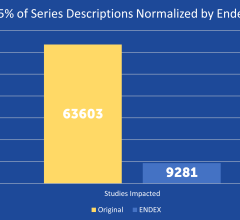
SPONSORED CONTENT — EnsightTM 2.0 is the newest version of Enlitic’s data standardization software framework. Ensight is ...
July 25, 2011 —Siemens Healthcare announced that syngo Neuro PBV IR (parenchymal blood volume interventional radiology) has received U.S. Food and Drug Administration (FDA) 510(k) marketing clearance. The software package is intended to provide visual assistance to physicians in the diagnosis and treatment of vessel malformations (such as aneurysms, arteriovenous malformations and stenoses).
Civco Medical Solutions is showcasing its RFSuite RFID tracking and verification system at the annual meeting of the American Association of Physicists in Medicine (AAPM).
Join Siemens Healthcare at the joint annual meeting of the American Association of Physicists in Medicine/Canadian Organization of Medical Physicists (AAPM/COMP) 2011, July 31-Aug. 3, at the Vancouver Convention Centre, Vancouver, British Columbia. Siemens will present a diverse line of radiation therapy advancements that shorten treatment delivery time and enhance treatment efficiency.
Accuray Inc. announced the installation of the CyberKnife robotic radiosurgery system at five academic oncology centers in Europe and the United States.
The new releases of Elekta's XiO treatment planning system and Focal contouring system (v. 4.62) will enable clinicians to develop and deliver radiation therapy plans more efficiently.
At the 2011 joint meeting of the American Association of Physicists in Medicine and the Canadian Organization of Medical Physicists (AAPM/COMP), TomoTherapy will showcase its Remote Planning solution, which extends the full TomoTherapy Planning Station functionality to any Web-connected computer.

 July 28, 2011
July 28, 2011 
